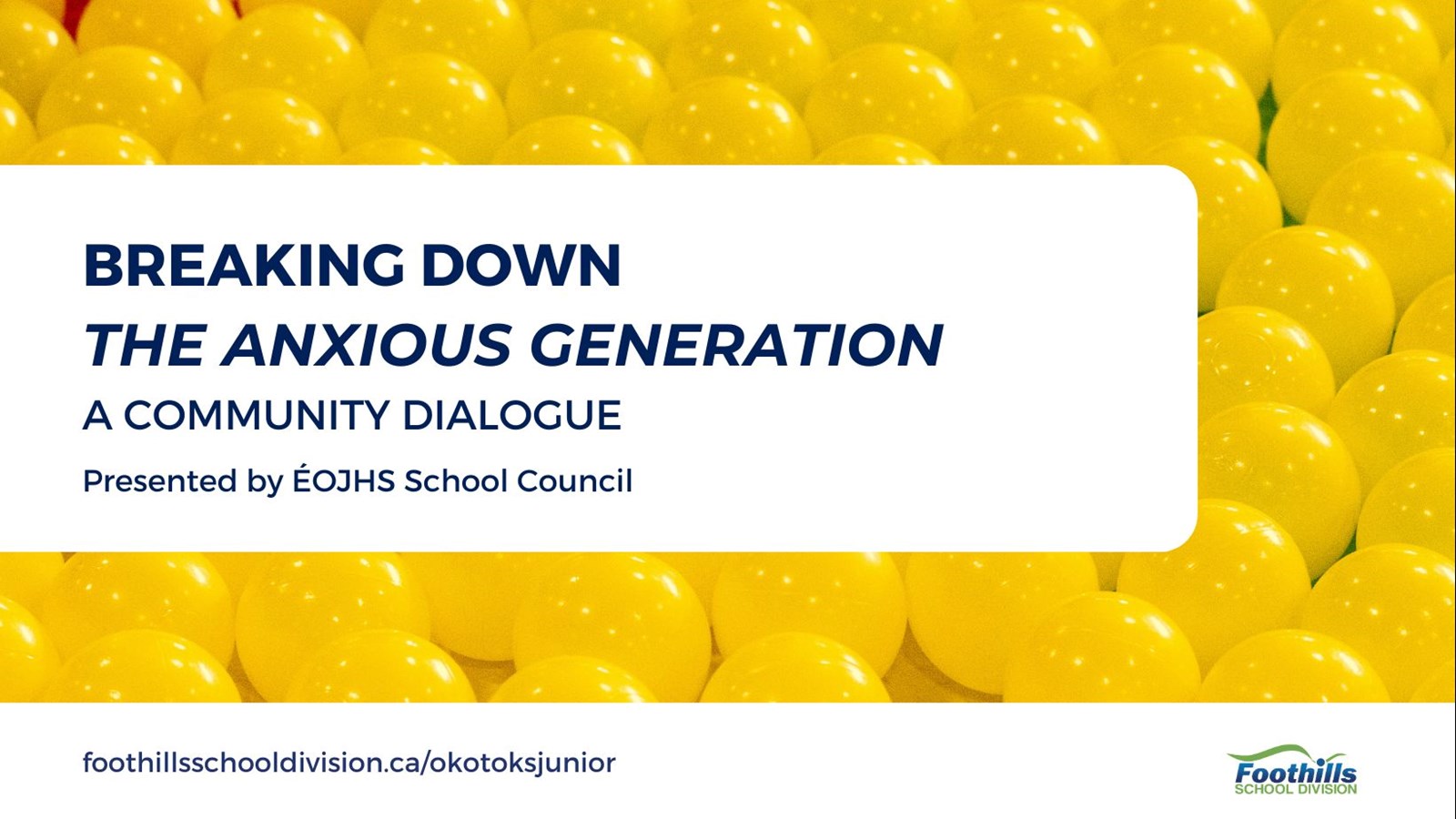Breaking Down The Anxious Generation – A Community Dialogue (Presented by ÉOJHS School Council)

Have you noticed an uptick in anxiety with children? Are you a parent or guardian concerned about the significant increase in anxiety in kids and want to learn more about how to support your child? École Okotoks Junior High (ÉOJHS) School Council invites you to join us for a community dialogue to discuss Jonathan Haidt's book, The Anxious Generation and its key points, providing insights into the causes, effects, and challenges associated with anxiety in children.
Event Details:
- Purpose: To discuss The Anxious Generation by Jonathan Haidt and its key points, providing insights into the causes, effects, and challenges associated with anxiety in children.
- Date: Wednesday, May 14 at 7:00 PM at École Okotoks Junior High School
- Activities:
- A short informative session highlighting key points of the book.
- Opportunity to sign out a copy of the book.
- Sign-up for further discussions on “What do we do now?”
Goals:
- Gain insights into the causes and effects of anxiety in our children today
- Learn effective strategies to support young people in managing mental health.
- Create a supportive, informed network that works together to ensure a positive future for all students in the community.
Join us for this important discussion and be part of a community dedicated to supporting the mental health and well-being of our children. Please follow the link to sign up so we can plan the space for the number of people attending. For more information, send an email to Ms. Paszkowski, Principal at ÉOJHS, paszkowskid@fsd38.ab.ca . We look forward to seeing you there!
About the book
The Anxious Generation (2024) Jonathan Haidt
Jonathan Haidt


.jpg)